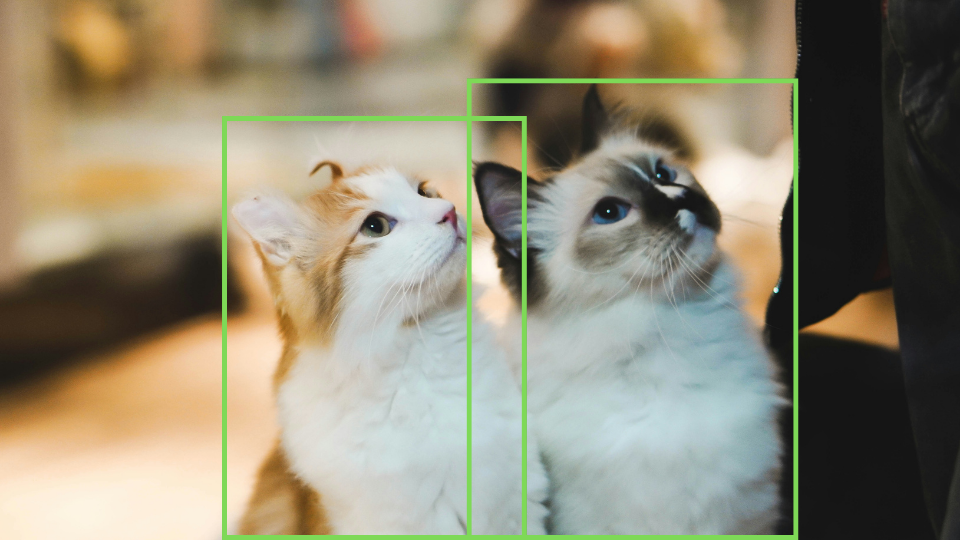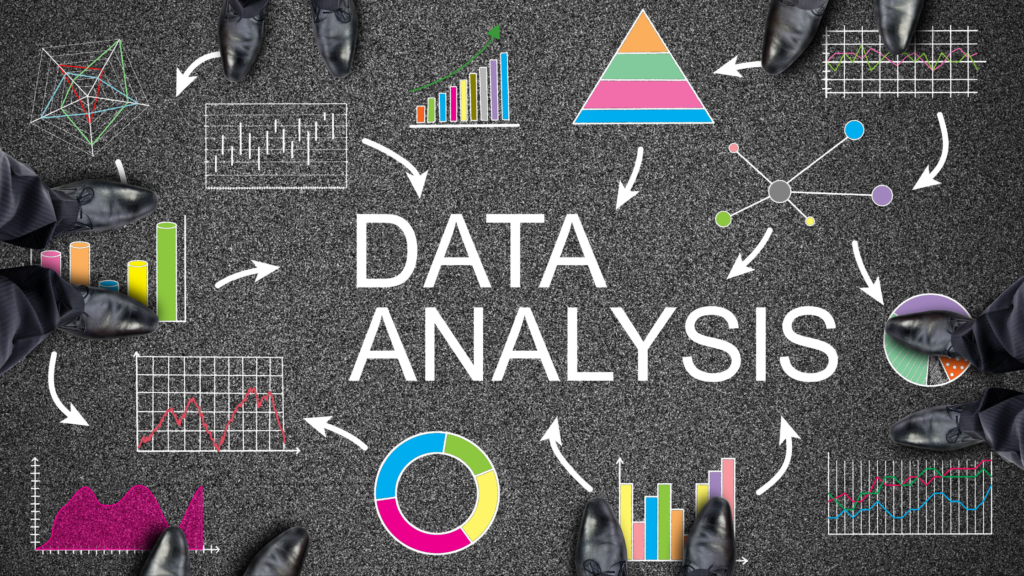Welcome to this week’s edition of the Data Science Demystified newsletter! Today, we will delve into one of the most intriguing areas of artificial intelligence: Computer Vision with OpenCV.
In this issue, we will discuss the fundamentals of OpenCV, explore how YOLO complements OpenCV, and demonstrate how to implement computer vision tasks in Python using OpenCV. Whether you are a data scientist, an AI enthusiast, or a developer looking to enhance your skills, this article will provide valuable insights and resources to help you stay at the forefront of the field.
Let’s get started!
Table of Contents
Getting Started with OpenCV
In this issue, we will discuss the fundamentals of OpenCV, explore how YOLO complements OpenCV, and demonstrate how to implement computer vision tasks in Python using OpenCV.
Computer Vision
Computer vision is a branch of artificial intelligence (AI) that enables machines to interpret and analyze visual information from the world, such as images and videos. Its goal is to replicate human vision by understanding objects, scenes, and activities within digital visuals. Key tasks in computer vision include image classification, object detection, facial recognition, and image segmentation.
This field combines techniques from machine learning, deep learning, and signal processing to extract meaningful insights from visual data. Applications of computer vision span various areas, including autonomous vehicles, healthcare diagnostics, security systems, and augmented reality.
Please click here for more details.
What is OpenCV?
OpenCV (Open Source Computer Vision) is an open-source library specifically created to tackle a wide range of computer vision tasks. It offers more than 2,500 optimized algorithms for various applications, including object detection, image processing, video analysis, and facial recognition. Written in C++, OpenCV also provides bindings for Python, Java, and other programming languages, enhancing its versatility.
Key Features of OpenCV
- Real-Time Performance: OpenCV is specifically engineered for real-time applications, which means it excels in processing tasks that require immediate feedback, such as live object detection and video streaming. This efficiency is crucial for applications in robotics, surveillance, and augmented reality where quick responses are essential.
- Cross-Platform Support: OpenCV boasts exceptional versatility, functioning effortlessly across multiple operating systems including Windows, Linux, and macOS. Moreover, it is compatible with mobile platforms such as Android and iOS, allowing developers to create applications that can run on a wide range of devices without a hitch.
- Rich Ecosystem: The library is equipped with a comprehensive set of tools and features, offering built-in support for various machine learning models, an array of video codecs, and numerous image formats. This diverse ecosystem empowers developers to handle complex image processing tasks with ease while benefiting from extensive pre-coded functionalities.
- Ease of Integration: One of OpenCV’s standout features is its ability to smoothly integrate with other powerful libraries like NumPy for numerical computing, TensorFlow for deep learning tasks, and PyTorch for dynamic neural networks. This capability enables the creation of complex data processing pipelines, facilitating advanced computer vision projects without the need to build everything from scratch.
What is Yolo?
YOLO (You Only Look Once) is a fast and popular computer vision model used for detecting objects in images and videos. It works by dividing an image into a grid and predicting what objects are present and where they are in a single step. YOLO is very efficient and can detect multiple objects in real-time, like people, cars, or animals. It’s widely used in areas like self-driving cars, security cameras, and robotics. YOLO helps machines “see” and understand the world quickly and accurately!
YOLO complements OpenCV
While both OpenCV and YOLO (You Only Look Once) are utilized in computer vision, they serve different purposes and use cases. Comparing them directly isn’t entirely accurate because they fulfill distinct roles in the field:
- OpenCV is a comprehensive computer vision library that provides tools for image processing, feature detection, and various vision tasks. It is versatile and can be used for functions such as filtering, image transformations, and basic object detection.
- YOLO is a deep learning-based object detection model specifically designed for real-time and accurate object detection.
- OpenCV can be used to preprocess images (e.g., resizing and filtering) and can also integrate with YOLO to implement object detection models.
- Consider them complementary tools – OpenCV acts as a toolkit for image preparation, while YOLO specializes in object detection.
When working on a project, assess your needs: if you require general-purpose image processing, use OpenCV; if you need high-speed object detection, opt for YOLO. They often work best when combined.
In summary, OpenCV excels in traditional image processing tasks, whereas YOLO is more effective for advanced, real-time object detection using deep learning techniques.
Implementing Computer Vision with OpenCV and Python
Now, let’s see OpenCV in action. Below is a step-by-step guide for implementing a basic computer vision project in Python. The example below helps detecting edges in an image using the Canny Edge Detection technique.
1. Install OpenCV and Matplotlib
!pip install opencv-python matplotlib2. Importing required libraries
#Import libraries
import cv2
import matplotlib.pyplot as plt3. Loading the Image: We load an image in grayscale mode for simplicity.
# Load the image - gray scale
image = cv2.imread('image.jpg', cv2.IMREAD_GRAYSCALE)
#Load rgb image
image1 = cv2.imread('image.jpg')
image_rgb = cv2.cvtColor(image1, cv2.COLOR_BGR2RGB)
4. Blurring the Image: Gaussian blur smoothens the image to reduce noise.
# Apply Gaussian Blur to reduce noise
blurred_image = cv2.GaussianBlur(image, (5, 5), 0)5. Edge Detection: The Canny function detects edges by finding areas of rapid intensity change.
# Perform Canny Edge Detection
edges = cv2.Canny(blurred_image, 50, 150)6. Visualization: Finally, the images are displayed side-by-side for comparison.
# Display the results using Matplotlib
plt.figure(figsize=(10, 5))
plt.subplot(1, 3, 1)
plt.title('Original Image')
plt.imshow(image_rgb)
plt.subplot(1, 3, 2)
plt.title('Ggray Scale')
plt.imshow(image, cmap='gray')
plt.subplot(1, 3, 3)
plt.title('Edges Detected')
plt.imshow(edges, cmap='gray')
plt.show()Use Case: This simple edge detection can serve as a foundation for applications like lane detection in self-driving cars.
Sample image used in the above example:

Visualization of the output images:

Tech Trends Spotlight: OpenCV in Real-Time Applications
With the introduction of hardware accelerators like GPUs, OpenCV has become even more powerful for real-time processing. OpenCV is widely used in various real-world applications, including:
- Surveillance Systems: It enables real-time motion detection and face tracking in CCTV systems.
- Healthcare: OpenCV is utilized in medical imaging to detect abnormalities in X-rays and MRIs.
- Retail: It aids in people counting and behavior analysis within retail stores.
- Augmented Reality (AR): OpenCV is employed in marker-based AR systems.
- Sports Analytics: It is used to track players and ball movement during live games.
Recommended Tools and Resources
1. Official OpenCV Documentation
- Comprehensive guide to all OpenCV functions. – OpenCV.org
2. Online Tutorials:
- FreeCodeCamp’s OpenCV course – https://www.freecodecamp.org/
3. Pre-trained Datasets:
- COCO Dataset: https://cocodataset.org/
- ImageNet: https://www.image-net.org/
4. GitHub Repositories
- OpenCV Examples: https://github.com/opencv/opencv
- Face Detection Models: https://github.com/opencv/opencv_face
- Image Processing Projects: https://github.com/spmallick/learnopencv
Closing Thoughts
Are you excited to explore the world of computer vision? Start experimenting with OpenCV today by applying it to your projects. Whether you’re working on face detection, object recognition, or video analysis, the possibilities are limitless! Share your projects and insights in our community forum, and don’t forget to check out our recommended GitHub repositories for inspiration.
Computer vision is transforming various industries, and tools like OpenCV are essential in making this technology accessible to everyone. As you explore OpenCV, keep in mind that its versatility enables you to develop solutions that address real-world challenges, ranging from healthcare to security.
Stay tuned for our next edition, where we will delve into advanced neural network techniques for computer vision. In the meantime, continue experimenting, stay curious, and share your experiences with OpenCV with us!
PS: please check out post on Deep Learning : Deep Learning Simplified: The Core, Applications, and Comparisons




You’ve written something that feels not just like knowledge, but like a quiet form of wisdom.
That’s such a kind thing to say. I really appreciate it — it encourages me to keep writing with heart.